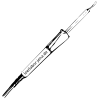projekte:3cmbeacon:start
Unterschiede
Hier werden die Unterschiede zwischen zwei Versionen angezeigt.
| Beide Seiten der vorigen RevisionVorhergehende ÜberarbeitungNächste Überarbeitung | Vorhergehende Überarbeitung | ||
| projekte:3cmbeacon:start [2023/01/07 11:20] – thasti | projekte:3cmbeacon:start [2023/01/23 19:42] (aktuell) – [Architecture] thasti | ||
|---|---|---|---|
| Zeile 1: | Zeile 1: | ||
| ====== Integrated 10 GHz Beacon Transmitter ====== | ====== Integrated 10 GHz Beacon Transmitter ====== | ||
| - | After the decline in use of ATV in Germany, an idea of building a 3 cm beacon at [[https:// | + | After the decline in use of ATV in Germany, an idea of building a 3 cm beacon at [[https:// |
| The goal of this project was building a 10 GHz beacon transmitter suitable for long-term unsupervised operation from commercially available integrated circuits. To make full use of the transmit power constraints in Germany, an output power of 1-2 W was targeted. Support for contemporary digital beacon transmission modes such as [[https:// | The goal of this project was building a 10 GHz beacon transmitter suitable for long-term unsupervised operation from commercially available integrated circuits. To make full use of the transmit power constraints in Germany, an output power of 1-2 W was targeted. Support for contemporary digital beacon transmission modes such as [[https:// | ||
| Zeile 18: | Zeile 18: | ||
| {{ : | {{ : | ||
| - | A Silicon Labs Si5342 is used as a crystal-driven reference PLL, which takes care of reference clock jitter cleaning and modulation generation. The high-resolution fractional divider allows synthesizing sub-Hz frequency steps of the output RF carrier, which are required for modern modulation formats. Due to the architecture of the synthesizer, | + | A Silicon Labs Si5342 is used as a crystal-driven reference PLL, which takes care of reference clock jitter cleaning and modulation generation. The high-resolution fractional divider allows synthesizing sub-Hz frequency steps of the output RF carrier, which are required for modern modulation formats. Due to the architecture of the synthesizer, |
| The HMC952A also has a built-in output RF power detector, which is read out by an on-board controller with integrated ADC. This simplifies the design since no external coupler is required to monitor forward power. The MCU further takes care of reading out the various DC power sensors on the board (to monitor voltages and currents of the SMPSes) and runs the sequencing of the beacon transmitter itself. It (optionally) communicates with a remote device through RS-422 (differential signalling). | The HMC952A also has a built-in output RF power detector, which is read out by an on-board controller with integrated ADC. This simplifies the design since no external coupler is required to monitor forward power. The MCU further takes care of reading out the various DC power sensors on the board (to monitor voltages and currents of the SMPSes) and runs the sequencing of the beacon transmitter itself. It (optionally) communicates with a remote device through RS-422 (differential signalling). | ||
projekte/3cmbeacon/start.1673090438.txt.gz · Zuletzt geändert: von thasti
